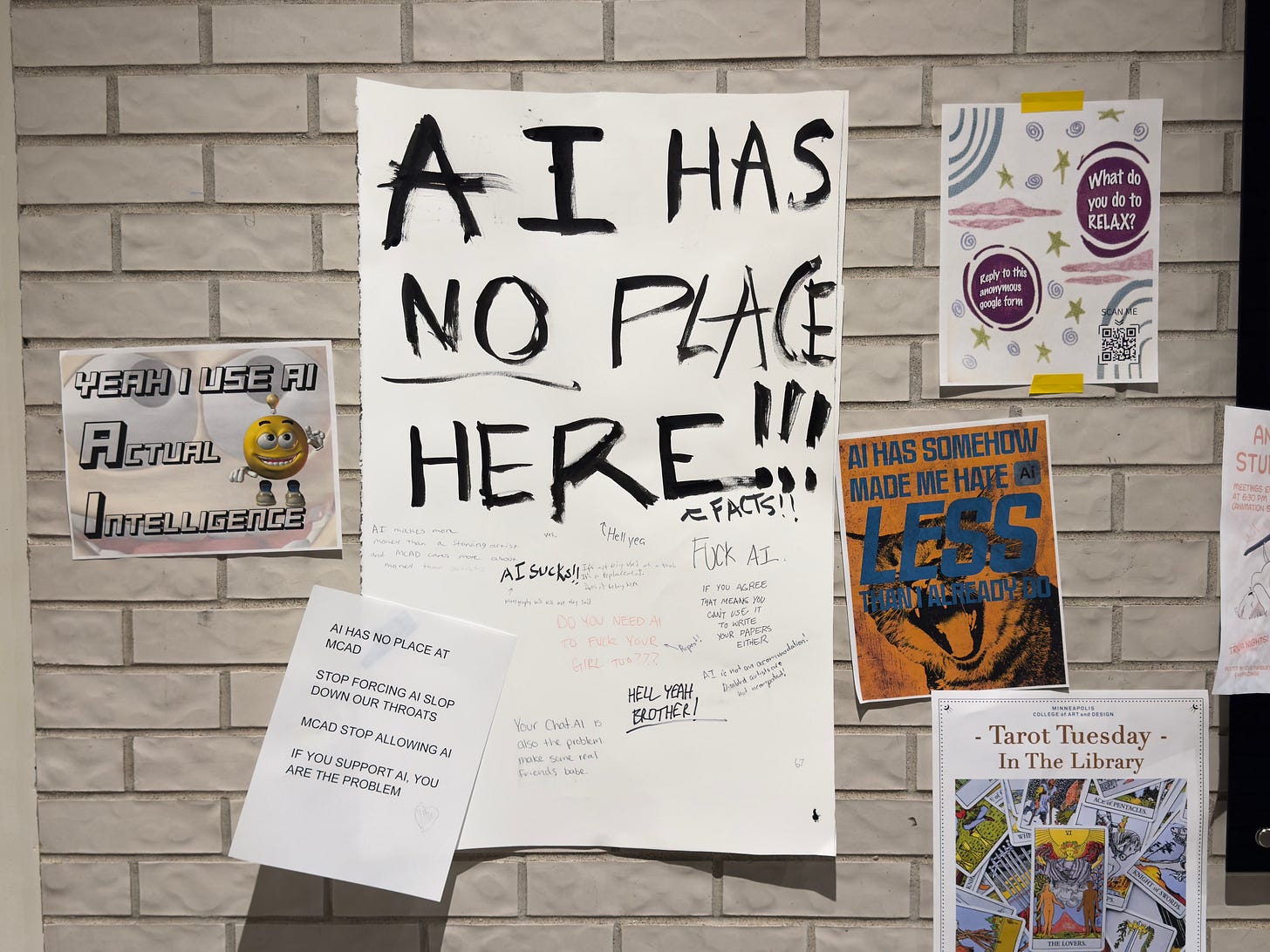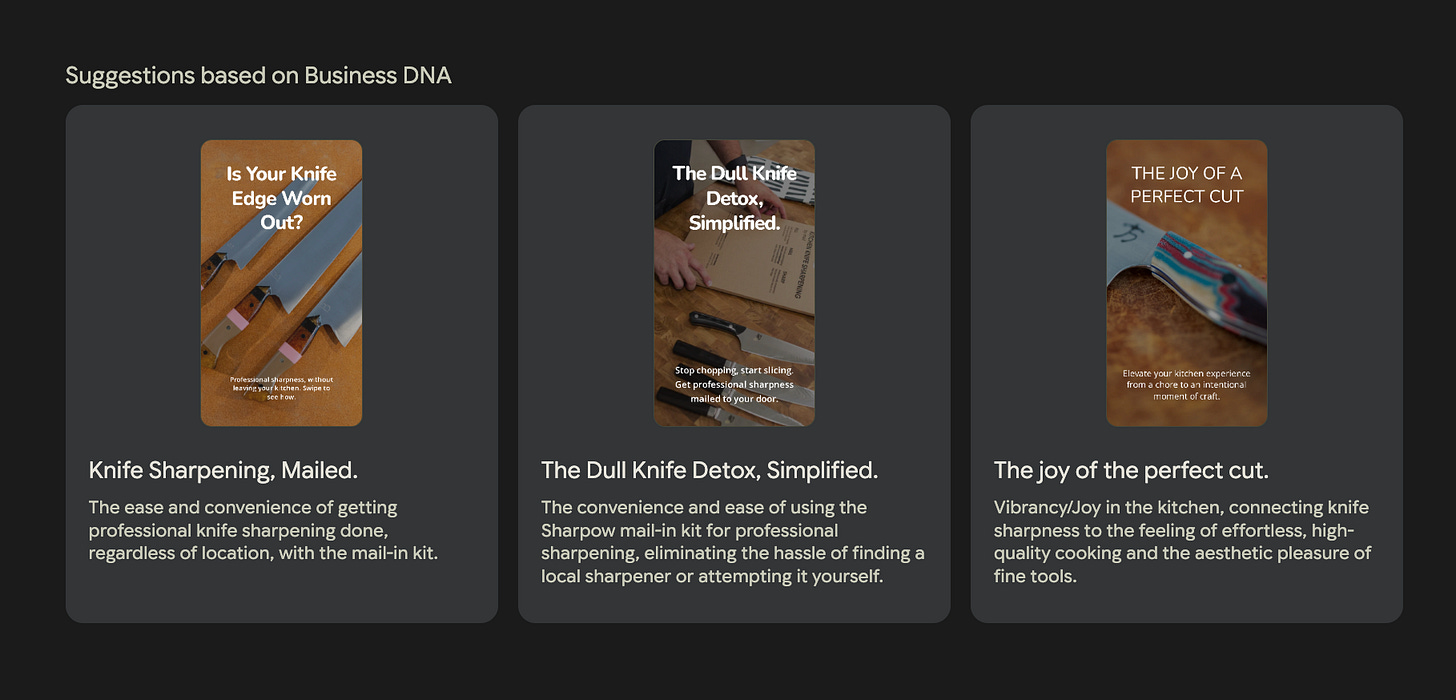209: What does it mean to be augmented?
Adobe Max, Pomelli, Canva/Affinity news reveal more about our near future
Imagine living in what is now Germany around 1400 A.D. with no running water, no TikTok and crucially—maybe one in a hundred people had an ability to read written words, and fewer knew how to write them. Back then you and I had an oral tradition. No use for the iconography we now associate with letters, numbers, words, grammar.
But then Gutenberg did his thing. He augmented humanity.
Which instigated a need for education. And fueled the growth of things like laws, contracts, maps, and literature. All of which changed everything. A world where the vast percentage of the population can read and write thinks and operates very differently than the world which preceded it. You and I are so fully augmented by reading and writing it is almost laughable to consider life without these abilities.
Then a similar thing happened with software. (Please read Paul Ford’s What Is Code?) And also with the Internet. And smartphones.
This is what’s happening with AI.
I see it with my students, and in my own work. How we receive and organize information, how we ruminate and contextualize it, then how we form opinions and take action are being augmented in small and amazing and worrisome ways. It’s not just about reworking what is, but also opening doors to entirely new ways of functioning. But can we see our augmentation? Did a person in 1550’s Bavaria recognize their life, altered by the technology of printing?

3 Quick Hits
1️⃣ Perplexity at Work - A Guide to Getting More Done - worth reading because, “This isn’t about working longer hours or taking on more tasks. It’s about working at the scale of your actual curiosity.”
2️⃣ Deloitte’s Digital Media Trends, Fall 2025 - worth reading because, “42% of Gen Zs watching micro series prefer the vertical video format.” What happens if 9:16 is the new 16:9?
3️⃣ Dentsu’s 2026 Media Trends report - worth reading because, “Deliberate, additive friction can foster a sense of exclusivity, community and achievement.” Maybe don’t embrace AI, instead, weaponize inconvenience.
It’s been yet another of those “wait, what new thing launched?” periods. Three significant items are worth noting.
Adobe Firefly Foundry
“Our stance is humanity is at the center of creativity and that can’t be replaced,” says Hannah Elsakr, VP of GenAI New Business Ventures at Adobe. While Elsakr and I agree, I have to wonder how the skeptical students at MCAD might respond. She was speaking during the firm’s annual creativity conference, on the launch of Firefly Foundry, “a new consultancy arm for Fortune 2000 companies to develop bespoke AI models that could craft hundreds of thousands of images, illustrations, and videos that conform strictly to their IP and creative guidelines,” describes Fast Company.
“The process is intensive and can take a couple of months just to get the first results. After months of training, the final model inherits all the world knowledge of the base Firefly engine but is then overfitted to speak the client’s brand language fluently and exclusively. The entire proposition hinges on two things Adobe believes it alone can offer at this scale: commercial safety and seamless integration.”
This type of corporate augmentation was inevitable. It has nothing to do with individual creativity and everything to do with math. Or as Fast Company put it, “A company with just eight products that wants to market them across 15 channels in 35 languages with a few refreshes a year is already looking at creating half a million individual assets.” Even the most efficient agency holding companies couldn’t staff that kind of churn solely with humans.
While Foundry remains a large org test, you can see how the approach will scale down. We’re already training ChatGPT and Claude with brand style and tone, chaining GPTs, et al. Soon enough Adobe will offer its full-meal deal to the rest of us. And the question remains, what will you do with this depth and quality of augmentation?
Google’s Pomelli
Of course Adobe isn’t alone in supplying augmentation. While Google reps joined Adobe to flaunt integrations like Nano Banana inside Photoshop, the AI foundry launched its own approach to, “easily generate scalable, on-brand social media campaigns.” Pomelli is live now. Where Adobe goes after giant corps, the Google Labs and DeepMind effort targets small-to-medium-sized businesses. Imagine an AI recognizing the patterns of your brands—its color values, typography, photo style, grid system, common verbal phrases—then generating social-ready creative for review. And if you know anything about Google, you could reasonably assert the rationale for what it’s proposing is predicated on what Google itself knows about your industry, audiences, seasonality, etc. Remember when Zuck promised to replace the ad industry? It feels here like Google delivered.

Is Pomelli perfect? As we say often around here, of course not. But could you use this to augment your work for a new business pitch? Could you use this to explore a more diverse range of concepts? Could you benefit from Google’s perspective on what its AI understands about your business?
Canva’s Affinity
Meanwhile, Canva took a page out of the innovative disruption playbook and relaunched its Affinity acquisition last week as a new single application encompassing three distinct workflows: Pixel, Vector and Layout editing. Their bet: just enough of the right tooling, integrated, beats an industry-leading suite of individually complex applications.
And they made the app free. Over a million downloads have occurred since.
“Operating at the edge of what we’re comfortable with also helps us to move more fluidly between different modes of thought… When you stretch into new domains, your brain encounters unfamiliar constraints and unexpected patterns, and in the process of reconciling them it learns flexibility. Each time you push into something unfamiliar, you’re adding knowledge but you’re also expanding your mental range of motion.”
- Neil Perkin, via his newsletter Only Dead Fish



